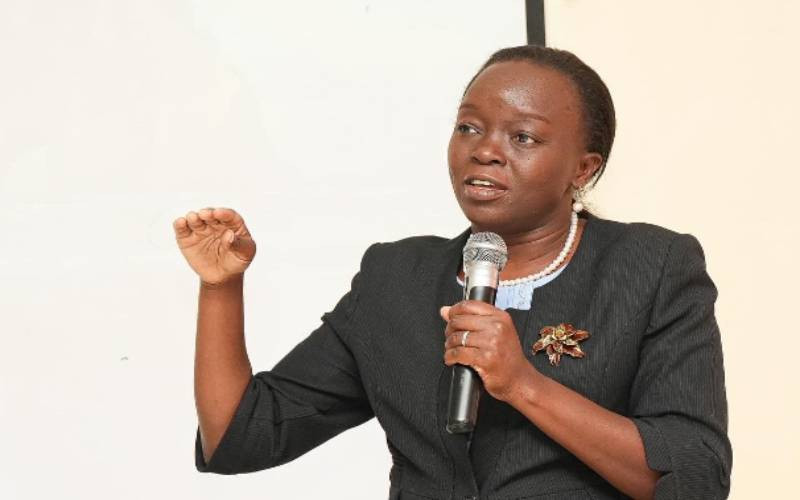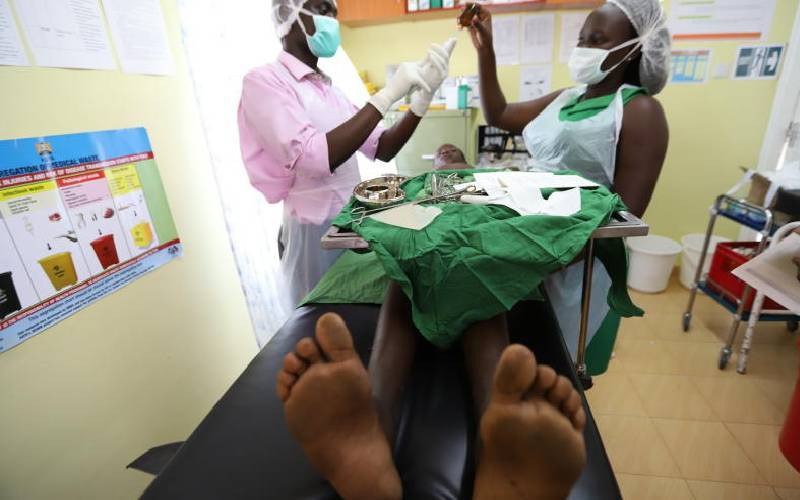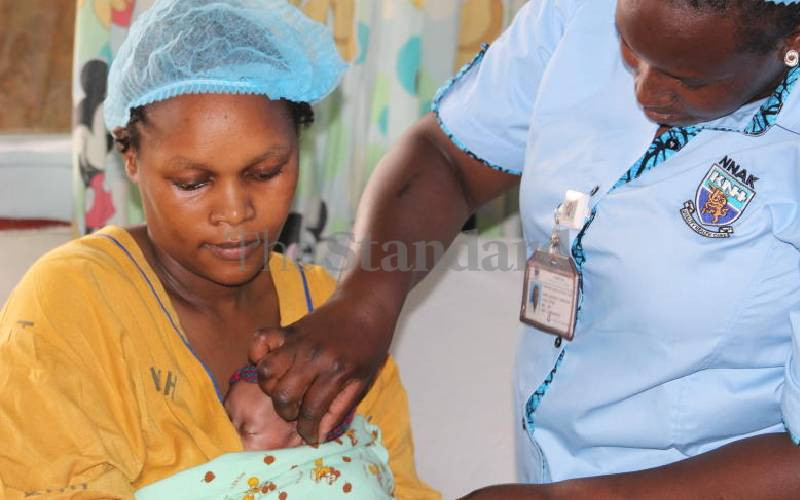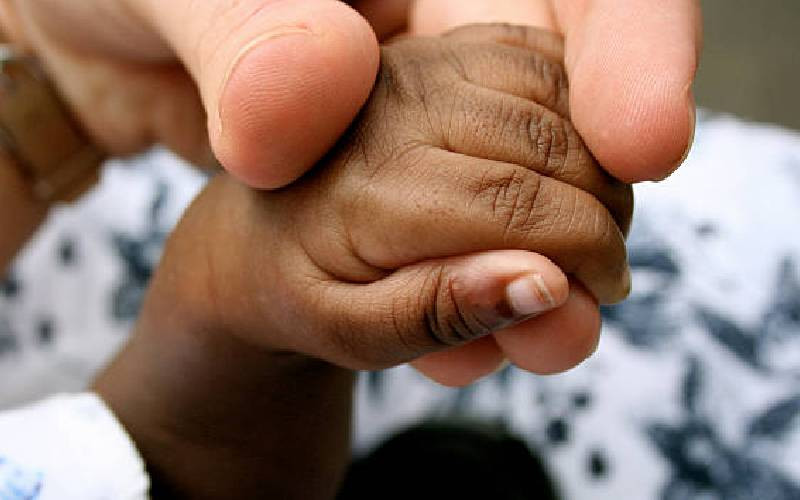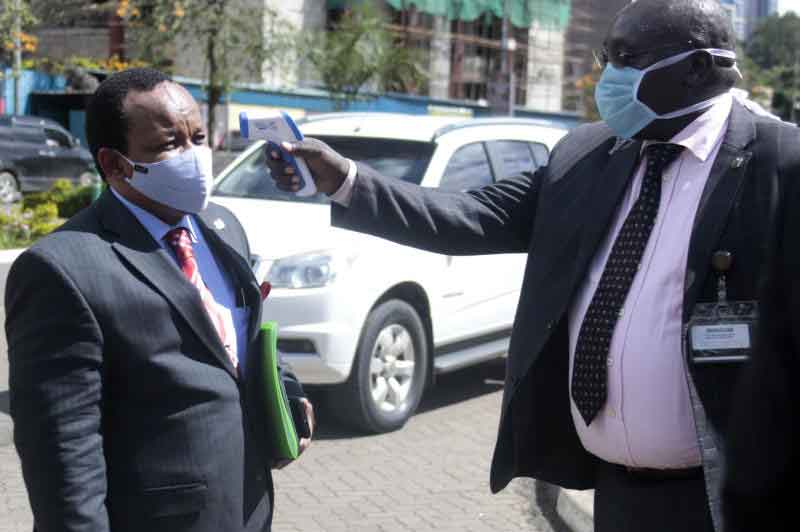
By the time the first case of COVID-19 in Kenya was reported on 12 March 2020, the Ministry of Health already had an Emergency Operations Centre comprising four Rapid Response Teams (RRTs).
Each team had five trained medical staff as well as designated telephone communication numbers for members of the pubic to report suspected cases, seek more information on the infection and ask questions.
A treatment and isolation unit for managing COVID-19 positive cases had been established at the country’s largest teaching and referral hospital - Kenyatta National Hospital and a total of 1500 health workers across various health facilities were also receiving training on managing COVID-19 patients.
World Health Organisation
In order to prevent community transmission of the SARS-CoV-2 virus causing the COVID-19 pandemic, cutting off spread at an early stage is extremely vital.
On 30 January 2020, the WHO declared COVID-19 a Public Health Emergency of International Concern (PHEIC) and issued the COVID-19 Country Preparedness and Response Plan (CPRP) catering for an initial 3-month period (1 February to 30 April 2020).
The CPRP was part of the WHO’s Strategic Preparedness and Response Plan (SPRP) and included operational planning guidelines to support countries preparation and response to COVID-19 cases.
The public health preparedness and response planning were aimed at stopping community human-to-human transmission of the SARS-CoV-2 virus while the healthcare system preparedness and response planning was aimed at providing care to infected cases while minimising the risk of further transmission to the healthcare providers.
Some of the WHO recommended measures for preparedness to handle COVID-19 at country level included: Surveillance focusing on rapid detection of imported cases, comprehensive and rapid case identification and contact tracing.
The measures further included monitoring the geographical spread and transmission intensity in areas where sustained community transmission has been detected; infection prevention and control measures at all levels of the healthcare system; establishment of functional triage systems and isolation rooms and procurement of supplies based on the WHOs COVID-19 Disease Commodity Package (DCP).
DCP included the developing reserve stock of patient kits required for case management; having sufficient infection prevention materials including personal protective equipment (PPE), water and sanitation for health (WASH) and hand-hygiene facilities; preparation of healthcare facilities for large increases in the number of suspected cases including identifying the capacity of intensive care units.
It also provided guidance on self-care for persons with mild symptoms of COVID-19 and when to contact healthcare facilities; establishing dedicated and well-equipped teams for transportation of suspected and referral mechanisms for confirmed cases; preparation of laboratory capacity to manage large-scale testing for COVID-19; training all staff handling COVID-19 patients and samples on standardized infection prevention and control practices etc.
Kenya’s response
When the WHO declared COVID-19 a global pandemic on 13 March 2020, Kenya already had one confirmed positive case being managed at the Kenyatta National Hospital isolation and treatment centre.
This was an imported case with a history of travel from continents with human-to-human community transmission of COVID-19 and the Ministry of Health had started the process of contact-tracing for isolation, screening and testing for infection.
Through an Executive Order issued on 28 February 2020, the President had established a National Emergency and Response Committee (NERC) for COVID-19 chaired by the Cabinet Secretary for Health.
The NERC had already started nationwide awareness and sensitization initiatives on public education about the COVID-19 pandemic including symptoms of SARS-CoV-2 viral infection as well as public health measures on reducing infection such as social-distancing; hand-washing and sanitation; respiratory hygiene and importance of minimising unnecessary movement by staying at home.
The government has also enhanced public-private partnerships to increase the local capacity for production of personal protective equipment (PPE) for the healthcare facilities. This increased local production, alongside donations sourced externally, has ensured there is a steady supply of PPEs to the healthcare facilities meeting current demand as well as availing face-masks to other essential service providers.
Impact and challenges
The points of entry public health emergency screening were initially very weak when the first case was reported.
Preparation of rapid health assessment and isolation facilities to manage symptomatic and/or ill passengers at major points of entry to the country as well as mechanisms to transport them under strict infection prevention precautions to designated isolation and treatment centres was done prior to closing the borders to human traffic on 25 March 2020 as the number of positive cases increased.
In order to effectively handle a pandemic such as the COVID-19, mass testing, isolation and quarantine of infected persons is critical to controlling and limiting the number of new infections.
Countries that had previous epidemic experience with SARS and MERS epidemics rapidly deployed mass-testing which enabled them to isolate and quarantine infected persons to limit community spread of the infection.
In China where the epidemic had started, a hospital facility with intensive care and respiratory support capabilities was rapidly set-up to handle the anticipated surge in severely ill patients.
This has been a major challenge in Kenya’s response to the COVID-19 pandemic with testing initially being restricted to only persons in isolation, with a history of travel to areas where there was community spread of COVID-19 and were exhibiting symptoms upon arrival in Kenya.
There is limited capacity for mass-testing especially in densely populated areas with confirmed cases. Mass-testing was initially being done for front-line health workers at designated treatment and isolation facilities.
This needs scaling-up to include mass-testing of other essential service providers within health facilities and beyond such as food handlers, security and cleaning personnel among others.
The government announced a nationwide curfew from 7pm to 5am as well as restriction of movement into and out of counties with a high number of COVID-19 positive cases (Nairobi, Mombasa, Kilifi, Kwale, Mandera).
These measures have impacted healthcare access and delivery especially for areas surrounding the major cities of Nairobi and Mombasa where most comprehensive healthcare services are found.
While hospitals and clinics still remain open, the ban on public transportation across counties introduces significant challenges in terms of accessing healthcare facilities for persons with chronic illnesses, pregnant women etc attending regularly scheduled clinics.
There have been challenges in coordination between the county and national levels of government in the procurement of critical equipment such as ventilators for respiratory support as well as recruitment of additional healthcare personnel.
With increasing community transmission of COVID-19 in Kenya, there is an urgent need for a better defined and coordinated mechanism to increase the capacity for intensive care, the supply of PPEs and recruitment of trained healthcare personnel in anticipation of a surge in the numbers of COVID-19 positive cases.
In summary, Kenya has taken most of the appropriate steps at implementing the WHO recommended Country Preparedness and Response measures for healthcare facilities, however, these require scaling-up to handle a surge in the numbers of acute and critically ill patients as a result of infection with COVID-19.
Nchafatso Obonyo is a Doctoral Clinical Researcher at ACAL Consulting's COVID-19 Think Tank
 The Standard Group Plc is a multi-media organization with investments in media platforms spanning newspaper print
operations, television, radio broadcasting, digital and online services. The Standard Group is recognized as a
leading multi-media house in Kenya with a key influence in matters of national and international interest.
The Standard Group Plc is a multi-media organization with investments in media platforms spanning newspaper print
operations, television, radio broadcasting, digital and online services. The Standard Group is recognized as a
leading multi-media house in Kenya with a key influence in matters of national and international interest.


